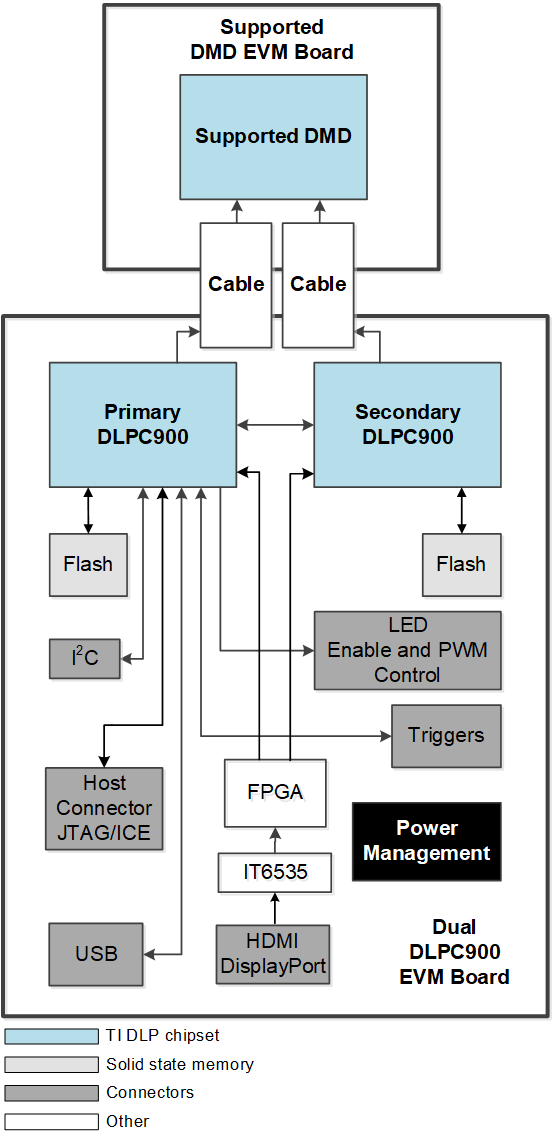DLPU102B December 2020 – July 2022
- Read This First
- 1DLP LightCrafter Dual DLPC900 EVM Overview
- 2Quick Start
-
3Operating the DLP LightCrafter Dual DLPC900 EVM
- 3.1 DLP LightCrafter Dual DLPC900 Control Software
- 3.2 PC Software
- 3.3 System Common Controls
- 3.4 System Settings
- 3.5 Video Mode
- 3.6
Pattern Modes
- 3.6.1 Menu Bar
- 3.6.2 Creating a Pattern Sequence in Pattern On-The-Fly Mode
- 3.6.3 Creating a Pattern Sequence in Pre-Stored Pattern Mode
- 3.6.4 Reordering a Pattern Sequence using the Edit LUT Feature
- 3.6.5 Creating a Pattern Sequence in Video Pattern Mode
- 3.6.6 Creating a Pattern Sequence With DMD Block Load
- 3.6.7 Pattern Settings
- 3.7 Batch Files
- 3.8 Peripherals
- 3.9 Firmware
- 3.10 Flash Device Parameters
- 3.11 JTAG Flash Programming
- 3.12 Intel (Altera) FPGA Programming
- 4Connectors
- 5Power Supply Requirements
- 6Safety
- 7Revision History
1.2 DLP LightCrafter Dual DLPC900 Evaluation Module (EVM) Hardware
The DLP LightCrafter Dual DLPC900 EVM is one half of a complete DMD imaging electronics subsystem and consists of the Dual DLPC900 Board which includes two DLPC900 Digital Controllers, a digital video receiver, flash memory, power management circuits, and supporting digital logic.
Also needed to complete the imaging subsystem is a DLP LightCrafter DMD EVM of which three are compatible with the LightCrafter Dual DLPC900 EVM. Each of these DMD EVMs consists of a DMD, a DMD board (pcb) containing on-board DMD power circuits, DMD mounting hardware when necessary, and two flexible (pcb) cables for connections to the Dual DLPC900 board. Supported DMD devices and their corresponding DMD EVM modules are:
- DLP500YX DMD is the DMD within the DLPLCR50XEVM
- DLP670S DMD is the DMD within the DLPLCR67EVM
- DLP9000 DMD is the DMD within the DLPLCR90EVM
Figure 2-1 is a block diagram outlining the major hardware components within the DLP subsystem using the DLPLCR90EVM as one of the three DMD examples.
 Figure 1-1 DLP
LightCrafter Dual DLPC900 Hardware Components
Figure 1-1 DLP
LightCrafter Dual DLPC900 Hardware Components